Classic Fairy Tales of Charles Perrault
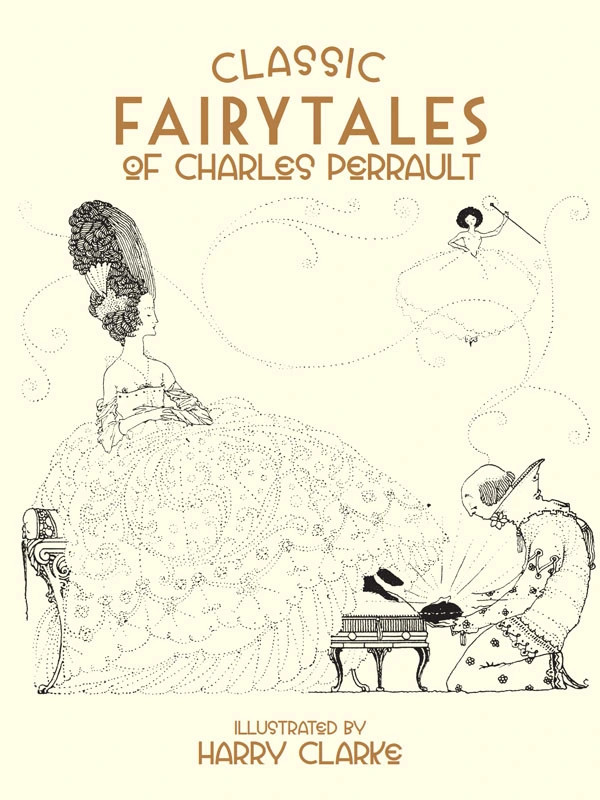
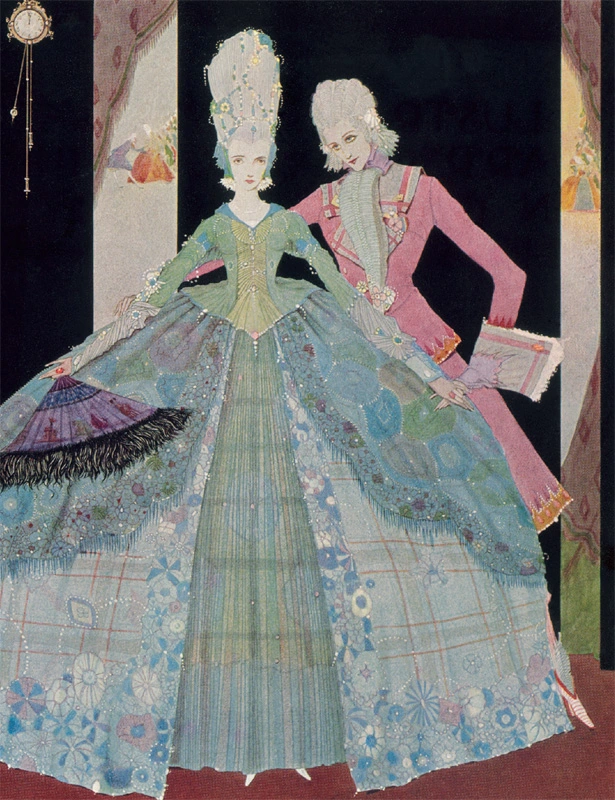
Contents
Cover
Title page
INTRODUCTION
LITTLE RED RIDING HOOD
THE FAIRY
BLUE BEARD
THE SLEEPING BEAUTY
PUSS IN BOOTS
CINDERELLA
RIQUET WITH THE TUFT
TOM THUMB
THE RIDICULOUS WISHES
DONKEY SKIN
THE LIFE OF CHARLES PERRAULT
Acknowledgements
Copyright page
About Gill & Macmillan
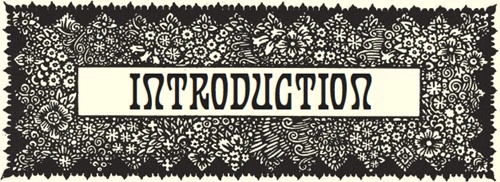
Harry Clarke’s work as an illustrator and stained-glass artist
Henry (Harry) Patrick Clarke, prolific and award-winning stained-glass artist and master illustrator, was born in Dublin on St Patrick’s Day,
1889, to an English father and an Irish mother. He went to school at Belvedere College in Dublin, leaving in 1903 to work in his father’s church decoration and supply business, where he
learned the techniques of his trade. He augmented his practical experience with studies at the Dublin Metropolitan School of Art, where he later taught illustration.
Described by the art critic Brian Fallon in 1983 as ‘Ireland’s only great Symbolist’,1 a label that has frequently been attached to
him, Harry Clarke was lauded in his lifetime by Æ as ‘one of the strongest geniuses of his time’.2 Although the style he evolved was
completely his own, his influences were many and varied, ranging from Art Nouveau, the Arts and Crafts Movement, Aubrey Beardsley, Gustav Klimt, the dazzling costumes and choreography of Serge
Diaghilev’s Ballets Russes and the stained-glass windows at Chartres Cathedral and Sainte-Chapelle, Paris. His incredibly detailed and intricate work, which drew heavily on Irish legend and
mythology, was in tune with the Celtic Revival movement of the nineteenth and early twentieth centuries. His favourite colour, blue, is used liberally in both his stained glass and his
illustrations, echoing the stained glass of Chartres and the windows and vaulted ceilings of Sainte-Chapelle. Much is made of his ‘dualism’, and it is true that good (in the guise of
beauty) and evil appear alongside each other in much of his work, particularly his illustrations.
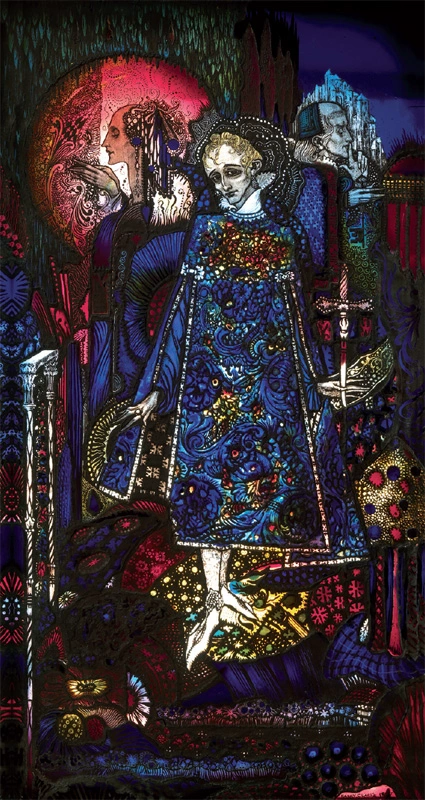
The Song of the Mad Prince, 1917, stained-glass panel, © National Gallery of Ireland
In 1914 Clarke visited the cathedral at Chartres. The stained-glass windows there inspired him to use the deep, rich colours that would become such a characteristic of his glasswork and
illustration. His predilection for a wonderful rich blue recalls the expensive lapis lazuli pigment traditionally used by medieval and Renaissance painters for the Virgin’s cloak. One of the
exceptions to his bold use of colour is the series of quite restrained stained-glass windows in Bewley’s Oriental Café, Grafton Street, executed in 1928, towards the end of his life,
and as much a part of Dublin’s urban landscape as its more obvious sculptural and architectural landmarks.
From an early stage in his career Clarke was getting small commissions for the design of theatre programmes, posters and the like. His first commission for book illustration was for Alexander
Pope’s ‘The Rape of the Lock’, followed by a commission for Samuel Taylor Coleridge’s ‘The Rime of the Ancient Mariner’. When he had a significant portfolio of
literary illustrations he brought it to 12 London publishers in turn, and was rejected by each of them. In the winter of 1913, however, he was commissioned by George C. Harrap & Co. to
illustrate the fairy tales of Hans Christian Andersen, to be published in a limited, signed edition. Harrap’s decision was probably influenced by the success of an edition of Andersen
illustrated by Edmund Dulac, and a popular retelling of the stories by Arthur Quiller-Couch, with illustrations by the young Danish artist, Kay Nielsen. There were to be 40 full-page illustrations
in all, 16 of them in colour.
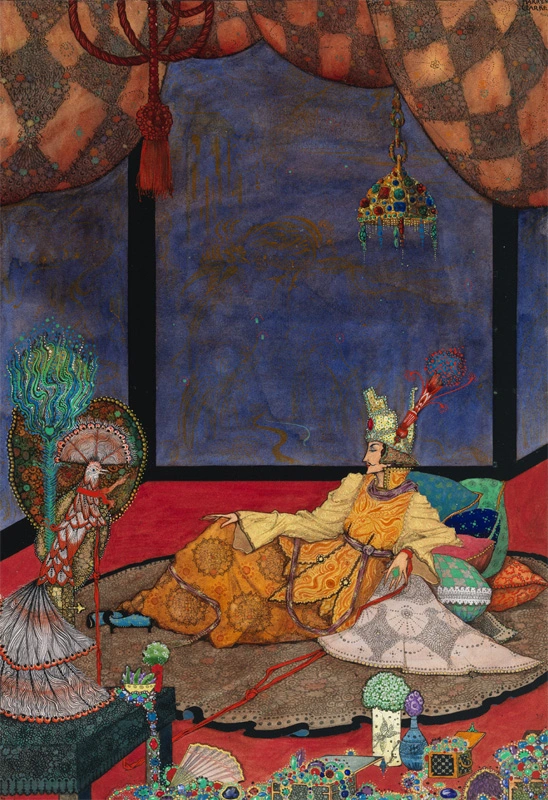
Illustration by Harry Clarke from Fairy Tales by Hans Christian Andersen. Photo © NGI
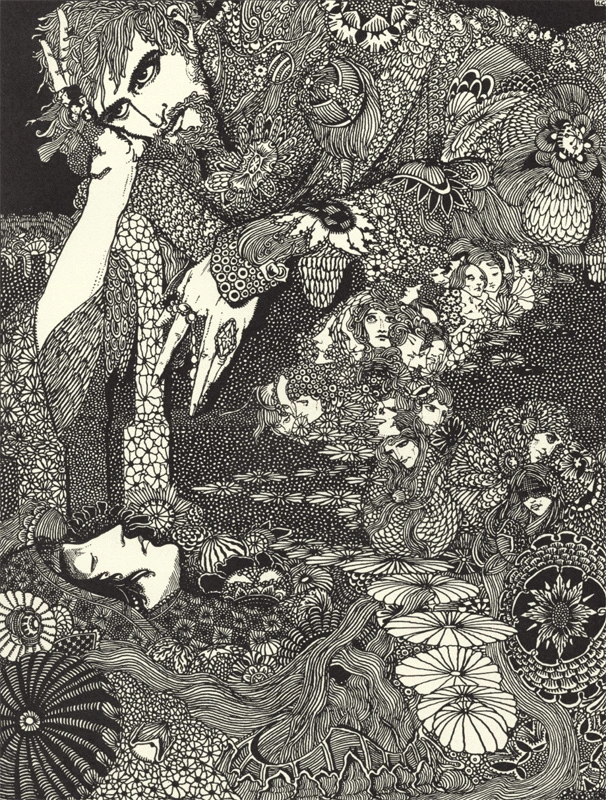
Illustration by Harry Clarke from Tales of Mystery & Imagination by Edgar Allan Poe
The illustrations were completed in April 1915 and Fairy Tales by Hans Christian Andersen was published in October 1916 in three editions, with 16 full-page colour plates, 24 full-page
black and white drawings and numerous decorations. An unsigned review in The Studio dismissed Clarke as just another of Beardsley’s disciples, but the volume was generally well
received.
Just as he was finishing the Andersen illustrations, Clarke started work on his first big stained glass commission, for five windows in the Honan Chapel at University College Cork, completed in
1918. Reviewing them in The Studio, Clarke’s friend Thomas Bodkin, who was later appointed director of the National Gallery of Ireland, wrote that the windows’ ‘sustained
magnificence of colour, their beautiful and most intricate drawing, their lavish and mysterious symbolism, combine to produce an effect of splendour which is overpowering’.3 The Honan windows, together with the Hans Andersen illustrations, established Clarke’s reputation as a stained-glass artist and book illustrator.
While he was working on the Harrap commission Clarke was reading Edgar Allan Poe’s Tales of Mystery & Imagination, and in 1919 he was commissioned by Harrap to execute
pen-and-ink and watercolour illustrations for the stories. Earlier comparisons to Beardsley may have contributed to the development of his unique, brooding style for these. The first edition was
published in October 1919 in four editions, including a de luxe limited, signed edition of 170 copies. It was heavily marketed by Harrap, was very favourably received by the critics and achieved
record-breaking sales. Shortly afterwards Clarke was commissioned by Harrap to produce 12 line drawings, 12 watercolours and 22 decorative drawings for The Year’s at the Spring, a
collection of contemporary poetry selected by Lettice d’Oyly Walters, which was published in September 1920 – again, the illustrations were greatly admired. His success must have given
him the confidence to approach Harrap in November 1920 with a proposal to publish a translation by Thomas Bodkin of Charles Perrault’s Mother Goose fairy tales. He included a sample
illustration, but Harrap reacted unenthusiastically, turning down the proposal for reasons of expense. Bodkin suggested approaching Hodder & Stoughton instead. Sir Ernest Hodder Williams was
interested, although he wasn’t convinced that Clarke’s illustrations would be right for them. He asked him to produce two more specimen illustrations, suggesting satisfactory terms if
the project went ahead. However, having worked solidly for two weeks working up three (rather than the two requested) samples, Clarke received a rejection from Hodder on the ground that although
the illustrations were beautiful they were unlikely to appeal to their important children’s market. The project was dropped until the end of 1921, when Clarke approached Harrap once again.
This time they agreed to publish.
The Fairy Tales of Perrault, published in August 1922 in several different editions with an introduction by Thomas Bodkin, had 12 colour plates, 12 black and white drawings, and numerous
decorations.
1 comment